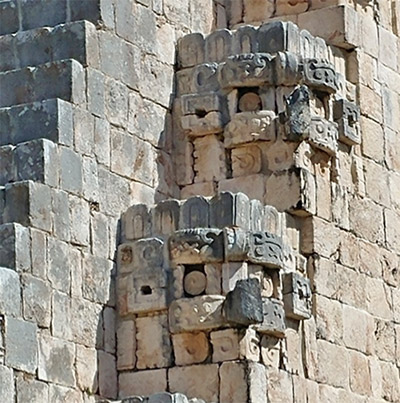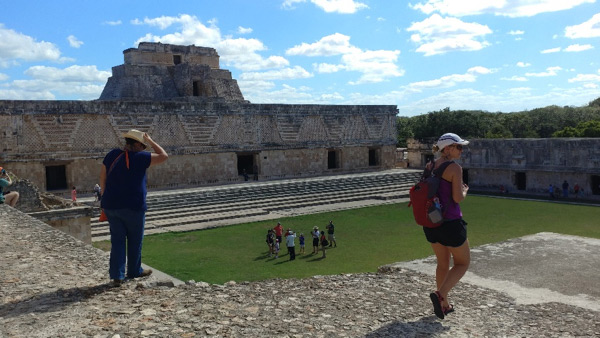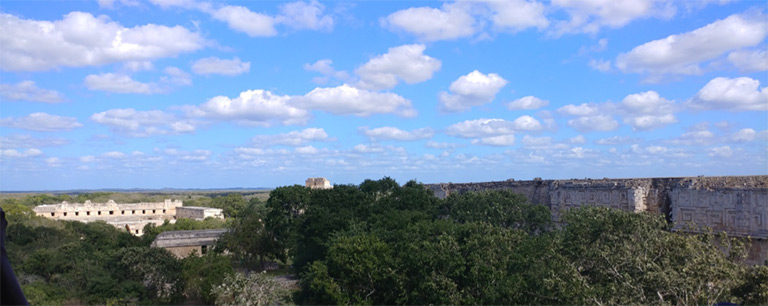Jordan Sutton: Student Report from 2016 Alternative Winter Break in Mexico

The most interesting place I’ve visited in any of my travels is the site of the ancient Mayan city, Uxmal. Because it is being restored and preserved as it was when it was inhabited, you can feel the history of the place in almost a physical way. It’s like going to a museum, but much better because you can climb the artifacts. When we first walked through the gate and into the site, an enormous pyramid temple dominated the view. Although we weren’t allowed to climb this structure in particular, we did get close enough to it to see its adornments of the faces of Chaac, the Mayan rain god. Our guide told us that the people who lived here worshipped this deity in particular because they had no regular access to freshwater and relied on rain for themselves, their animals, and their crops to survive. As a mythology buff, it was interesting to see this god not as a literary figure but as a central part of peoples’ lives. These people didn’t pray for abstract needs; for example, the Vikings might have prayed to Thor for strength in battle, or the Greeks might have prayed to Athena for wisdom. To the Mayan people, prayer to Chaac was a direct and regularly urgent matter of life and death.
We were led just past the temple to an excavated courtyard surrounded by four narrow buildings on each side that we were allowed to climb through. All the buildings were covered in cultural symbols that were important to the ancient Mayans: snakes intertwined and eating each other’s heads to represent life and death, owls representing the underworld, and, of course, many instances of the face of Chaac.
Standing at the entrance, it was easy to envision what a gathering might have felt like there, with the people watching from the steps while the priest put on a show in the center. It reminded me of what it’s like being in a busy mall or in Market Square. I climbed through many of the openings in the buildings and imagined what it must have been like in days of old to have vendors set up in there with their storage farther back. You can picture that it could have been as busy and populated as modern public spaces are today. It helped that our guide was doing a great job answering all my questions and painting this picture in my head.

We moved on to other structures, but these didn’t have the same effect as the previous ones because they were either mostly destroyed or still undergoing restoration/excavation. These included houses for wealthier citizens and priests, a ball court and “locker room”, and more temples. Our guide filled us in on the history and progress of the site since its discovery, and he, like the other guides we had on this trip, seemed genuinely enthusiastic and proud of his history and the work they were doing to preserve it. I think this is the reason why there is an almost tangible feeling of the past there, and why the city left such an impression on me. The last thing the guide did with us was point out a temple and tell us to climb to the top and look at the view. This was definitely my favorite part of the whole trip. The sight was of the city and its surrounding nature, clear of any trace of modern civilization save for an unfortunately placed hotel. You could imagine a citizen of Uxmal standing in that exact spot looking at nearly the exact same view and go back in time and stand there with him.
